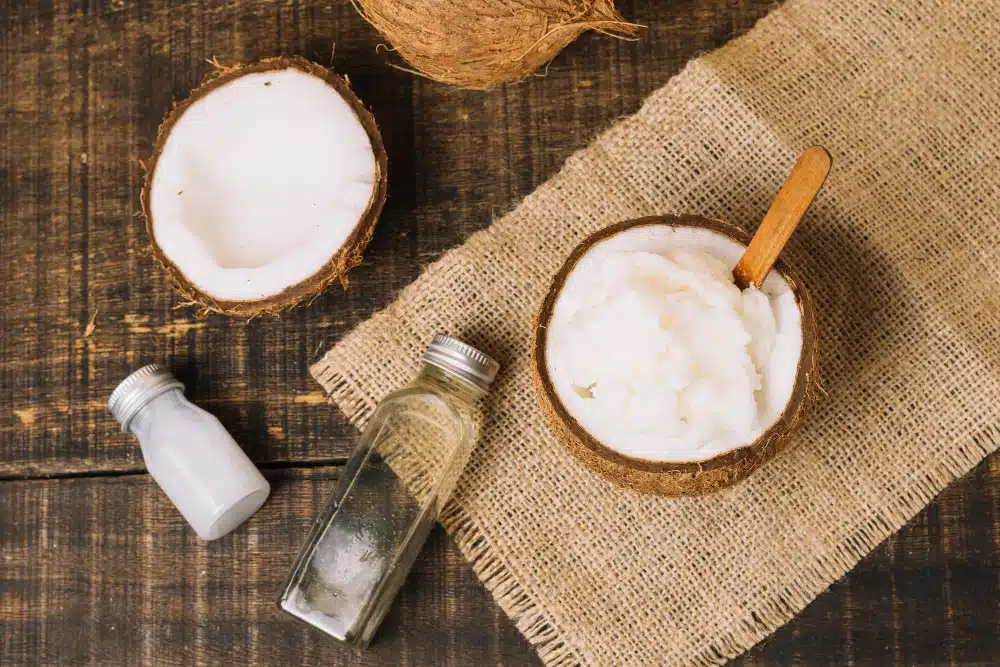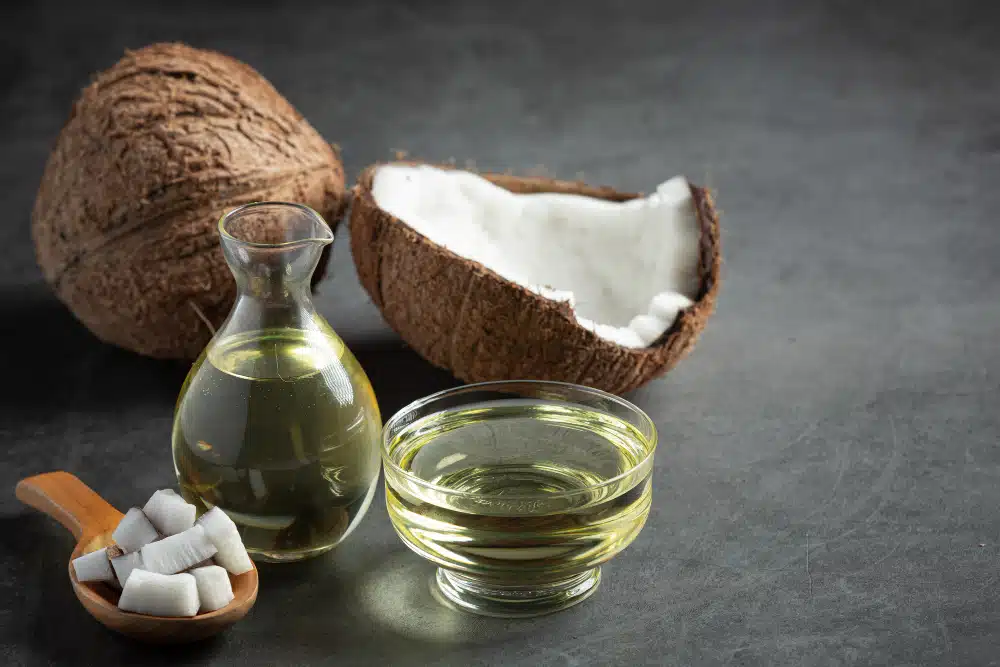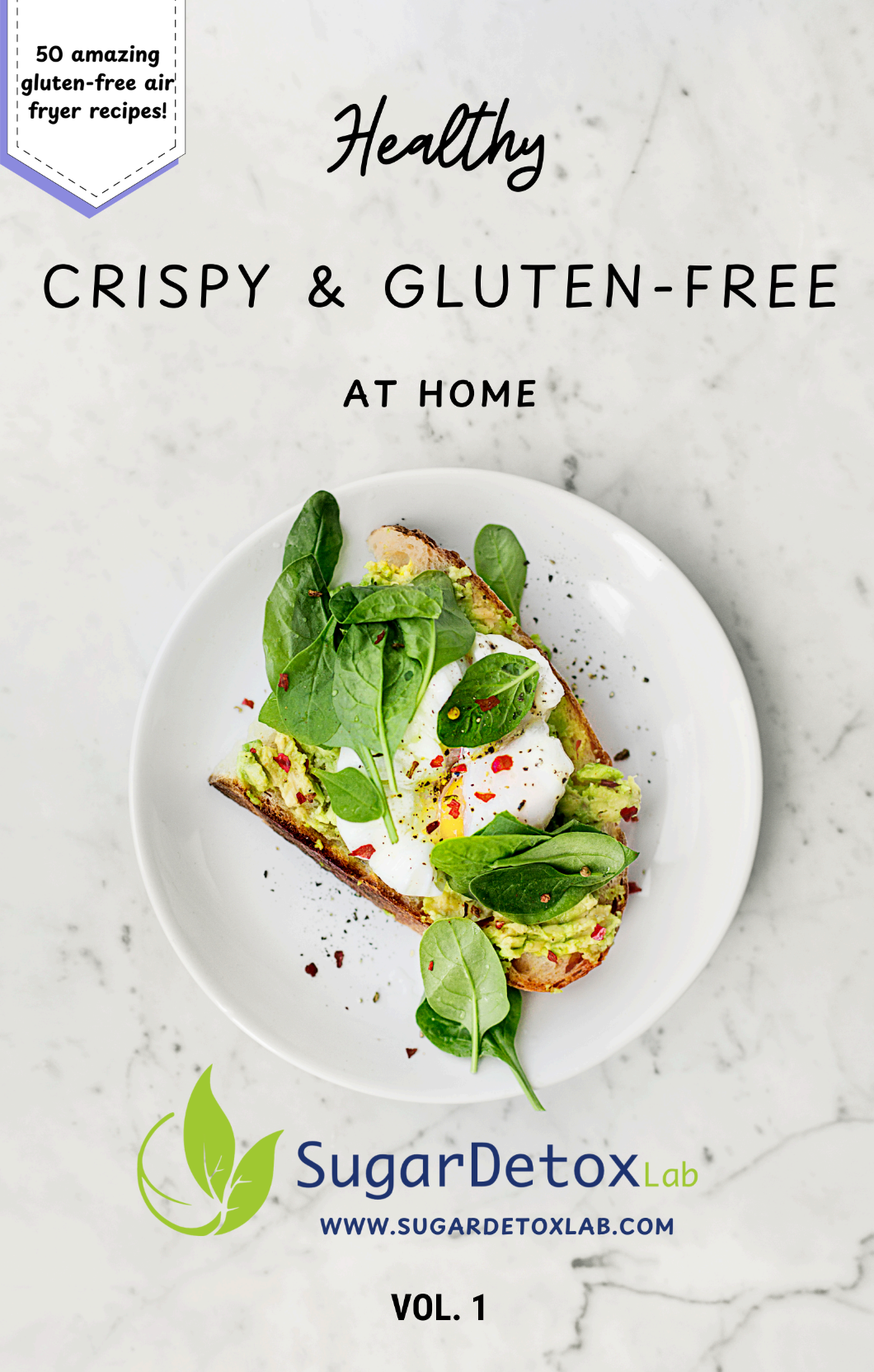If you’ve ever searched for a healthier soy sauce substitute, you’ve likely come across coconut aminos. But what are coconut aminos exactly, and why are so many people—especially those following gluten-free, soy-free, or Paleo diets—making the switch?
In short, coconut aminos are a naturally fermented, soy-free seasoning sauce made from coconut tree sap and sea salt. Despite the name, they don’t taste like coconut at all! Instead, they have a savory, slightly sweet flavor remarkably similar to traditional soy sauce, but with lower sodium and zero soy.
What Exactly Are Coconut Aminos?
Coconut aminos are a dark, flavorful sauce made from the fermented sap of coconut blossoms mixed with a small amount of sea salt. This fermentation process naturally produces amino acids (hence the name “aminos”) and a rich umami flavor.
Key Facts About Coconut Aminos:
- Made from: Coconut blossom sap and sea salt
- Taste: Milder, slightly sweeter, and less salty than soy sauce
- Color: Deep brown
- Texture: Thin and pourable
- Common brands: Coconut Secret, Bragg, Thrive Market
How Are Coconut Aminos Made?
The process of making coconut aminos is simple and natural. Here’s how it works:
- Harvesting the sap: Farmers tap coconut trees to collect sap from the blossoms.
- Fermentation: The sap is allowed to ferment naturally over several days, developing a rich umami taste.
- Blending: The fermented sap is mixed with sea salt for seasoning and preservation.
- Bottling: It’s then filtered and bottled for use as a seasoning sauce.
Health Benefits of Coconut Aminos
While coconut are not a “superfood,” they do offer several health advantages—especially for people limiting sodium, soy, or gluten intake.
1. Soy-Free Alternative
Traditional soy sauce is made from soybeans, which are a common allergen. Coconut provide the same umami taste without any soy, making them ideal for those with soy allergies or sensitivities.
2. Lower in Sodium
Coconut aminos contain up to 70% less sodium than soy sauce. This makes them a great choice for heart health and anyone watching their salt intake.
3. Gluten-Free
Since they’re made from coconut sap instead of wheat or soy, coconut aminos are naturally gluten-free—perfect for people with celiac disease or gluten intolerance.
4. May Help Balance Blood Sugar
The fermentation process retains small amounts of nutrients from coconut sap, which can support stable energy and blood sugar levels compared to highly processed sauces.
5. Rich in Amino Acids
Amino acids are the building blocks of protein. While not a major protein source, coconut aminos contain trace amino acids that may contribute to muscle repair and metabolic function.

How to Use Coconut Aminos in Cooking
Coconut are incredibly versatile and can replace soy sauce in almost any recipe. Here are the best ways to use them:
1. Use as a Soy Sauce Substitute
Replace soy sauce 1:1 with coconut aminos in recipes like:
- Stir-fries
- Noodle dishes
- Fried rice
- Marinades
2. Drizzle Over Vegetables or Rice
Add a few drops over roasted or steamed vegetables, grain bowls, or sushi for a savory flavor boost.
3. Use in Marinades
Coconut aminos add depth and mild sweetness to marinades for:
- Chicken
- Salmon
- Tofu
- Beef or shrimp
4. Stir into Soups or Sauces
Add 1–2 teaspoons to broths, soups, or dressings for extra umami flavor.
5. Mix with Other Ingredients
Combine with garlic, ginger, sesame oil, or honey for delicious homemade sauces and glazes.
Coconut Aminos in Special Diets
- Paleo diet: 100% compliant
- Keto diet: Very low in carbs (about 1g per tsp)
- Whole30: Fully approved
- Gluten-free diet: Safe alternative to soy sauce
- Vegan diet: Naturally plant-based
How to Store Coconut Aminos
To keep coconut aminos fresh and flavorful:
- Before opening: Store in a cool, dark place like your pantry.
- After opening: Refrigerate and use within 6 months for best quality.
- Shake well before using, as natural separation can occur.
Common Mistakes to Avoid
- ❌ Over-salting dishes – Coconut are less salty, so taste before adding extra salt.
- ❌ Cooking on high heat too long – It can lose its subtle sweetness if overcooked.
- ❌ Mixing with too many sauces – Its delicate flavor can be masked by stronger condiments.
FAQ: What Are Coconut Aminos?
1. Do coconut aminos taste like coconut?
No. Despite the name, they taste savory and slightly sweet, similar to soy sauce—but without coconut flavor.
2. Are coconut amino healthy?
Yes. They are lower in sodium, soy-free, and gluten-free, making them a heart-healthy alternative to soy sauce.
3. Can I use coconut amino instead of soy sauce in all recipes?
Absolutely! Use a 1:1 ratio in most recipes—especially stir-fries, marinades, and sauces.
4. Are coconut aminos keto-friendly?
Yes. With less than 1g of carbs per teaspoon, they fit perfectly into low-carb or keto diets.
5. Do I need to refrigerate coconut amino?
Yes, once opened. Refrigeration helps preserve freshness and flavor.
6. What’s the difference between coconut aminos and cold pressed avocado oil?
They serve different purposes: coconut are a soy sauce substitute for seasoning, while cold pressed avocado oil is a cooking oil rich in heart-healthy fats. Both are great for clean, healthy cooking.
Conclusion
So, what are coconut aminos? They’re a flavorful, naturally fermented sauce made from coconut blossom sap and sea salt—a healthier, soy-free alternative to soy sauce. With lower sodium, no gluten, and a naturally sweet umami flavor, coconut are perfect for anyone looking to eat clean and enhance flavor without compromising health.
Whether you’re on a Paleo, gluten-free, or low-sodium diet, this versatile condiment deserves a spot in your kitchen. Use it in marinades, stir-fries, or as a dipping sauce—your meals (and your body) will thank you!






